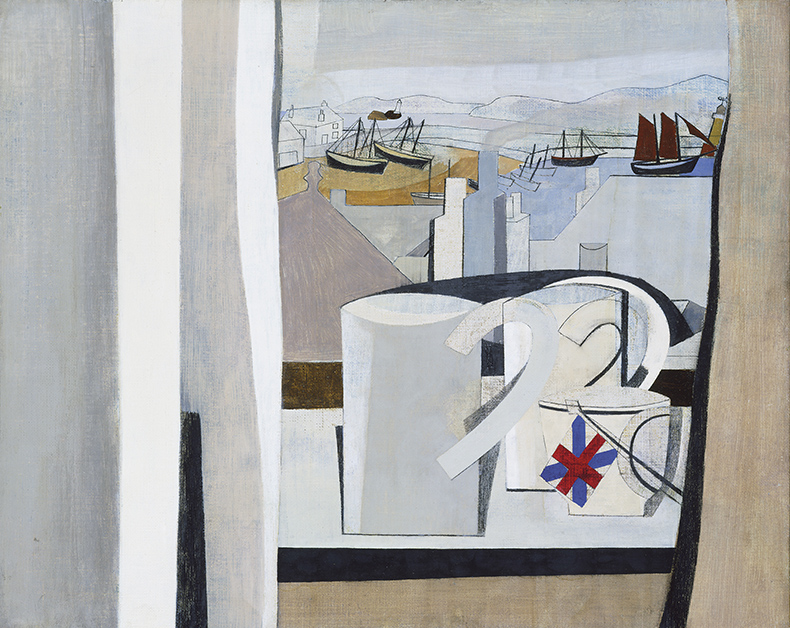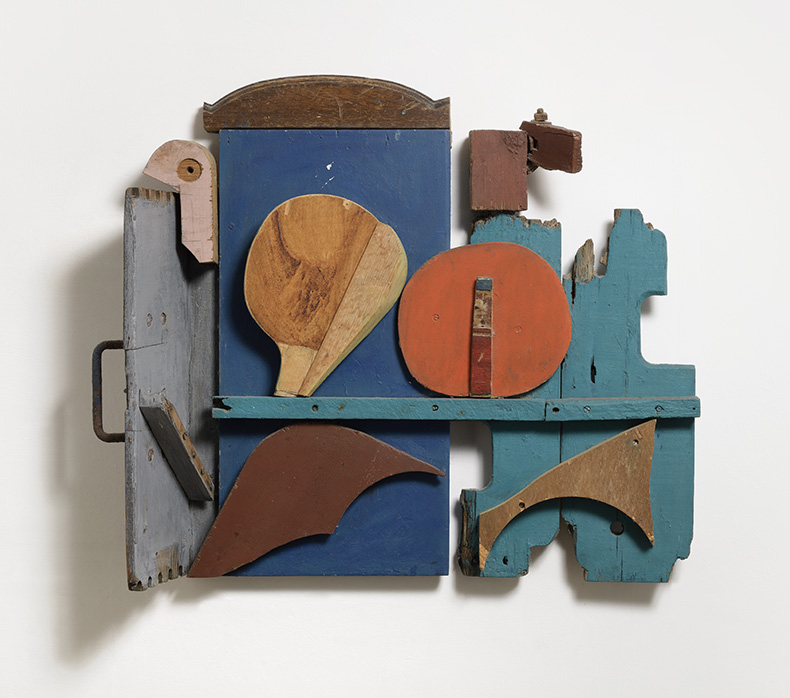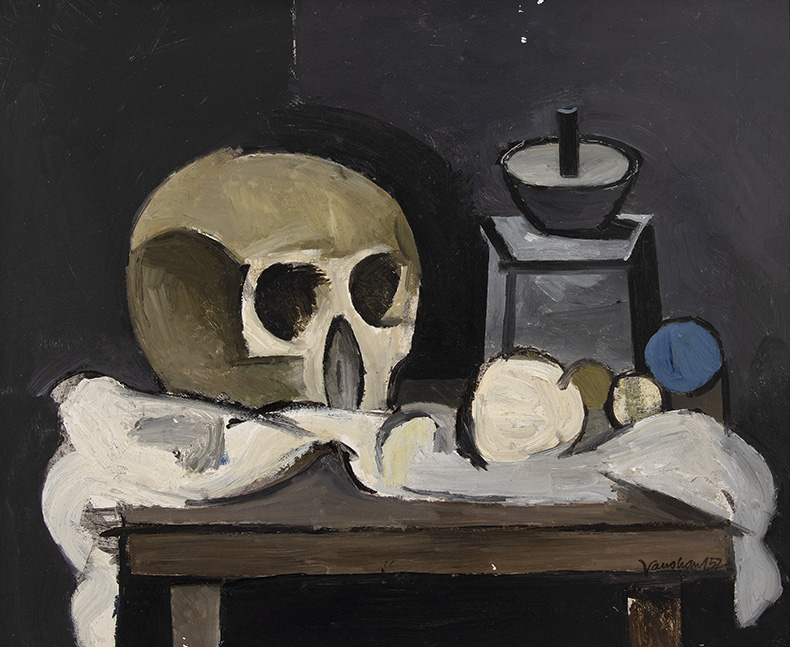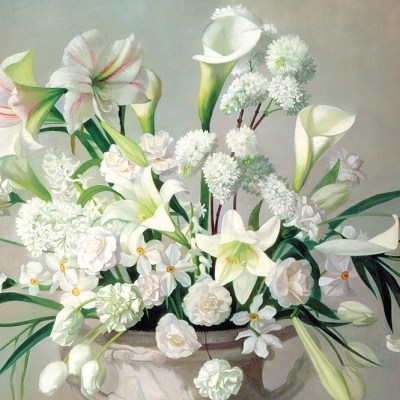For many, the mention of still life may conjure little more than a mental image of a bowl of fruit; for the more art-inclined, perhaps Van Gogh’s golden sunflowers will spring to mind. The genre has sometimes been considered dull in comparison to works that depict people. Pallant House Gallery, however, is having none of this narrative. Its current exhibition, ‘The Shape of Things: Still Life in Britain’, argues that still life was and continues to be integral to British art. Claiming to be one of the first dedicated to the subject in the country, the exhibition takes its task seriously, presenting paintings by some 100 artists who have contributed to an often-overlooked genre.
‘The Shape of Things’ begins with an overview of the origins of still life in Britain, in a room containing vanitas and memento mori paintings inspired by 17th- and 18th-century European masters. Despite the inclusion of works such as Vanitas Still Life (1694) by Dutch émigré Edwaert Collier, it’s anything but a conventional opening. In the centre of the room is a pair of vases by ceramicist Lindsey Mendick, created in 2024. Covered in an inky glaze, they crawl with bats, crustaceans, coral and bugs and a tentacle twists out of the eye socket of a skull protruding off the edge of one the vases. Though some 400 years separate these works, macabre warnings of the transience of life are obvious in both.
1943–45 (St Ives, Cornwall) (1943–45), Ben Nicholson. Tate, London. © Angela Verren-Taunt. All rights reserved, DACS 2024

The exhibition then sets off on what Simon Martin describes in the catalogue as a ‘chrono-thematic’ exploration of still life, with the focus firmly on the 20th century. In the 1910s, members of the Bloomsbury Group were heavily influenced by apple-obsessed Cézanne. In The Mantelpiece (1914), Duncan Grant plays with form, colour and texture, using saturated tones of blue, red and yellow and collaging paper cut-outs on to the canvas. The sharp lines and obscure shapes of Nina Hamnett’s Still Life (Blue Stove) (c. 1915) show an approach that was distinctly her own – despite attempts at ‘mentoring’ by artists such as Walter Sickert.
After the First World War, still life remained popular, with artists turning to the genre in search of stability or a way of articulating interwar anxiety. Glyn Philpot’s verdant bouquet of native botanicals in Stachys and Leaves (1934–35) is a relatively conventional example of the genre; Trial and Error (1939), however, is an uncanny composition by Meredith Frampton depicting a teapot, mannequin head, unfurling papers and more that echoes the distorted world order.
Toy cupboard (thirty) (1983), Margaret Mellis. Courtesy Redfern Gallery, London; © Estate of Margaret Mellis

In the 1940s and ’50s, artists such as Ben Nicholson, William Scott and the younger painters of the St Ives School explored the pull of abstraction through still life. Though Nicholson’s reduced, cubist-inspired forms in some of the paintings on display here have more tenuous ties to the genre than his earlier works, such as 1928 (striped jug and flowers), it’s clear he never fully left it behind. In an exhibition dominated by painting, it’s refreshing to see other mediums: Margaret Mellis’s Toy cupboard (thirty) (1983) is a colourful driftwood assemblage of amorphous shapes that recall everyday objects – though it would be hard to say what, exactly.
A section dedicated to ‘death, decay and post-war austerity’ shows how many artists returned to memento mori motifs in response to the horrors of the Second World War; the yellowing skull with cavernous eye sockets in Keith Vaughan’s Still Life with Skull (1952–53) is a particularly haunting example. Next is a room concerned with post-war consumerism that takes us into the 21st century. Gavin Turk’s Dump (2004) is a charmingly sardonic work consisting of a black-painted bronze sculpture of a rubbish bag that speaks to the wasteful cycle of human consumption.
Still Life with Skull (1952–53), Keith Vaughan. Collection of Antony Wright, London. Photo: Justin Piperger; © Estate of Keith Vaughan. All rights reserved, DACS 2024

Things could be getting too serious were it not for a small room that shows how powerful ‘stillness’ can be. Absence can be felt as deeply as presence in Rachel Whiteread’s Untitled (for Frank) (1999): a plaster, polystyrene and steel sculpture cast from well-thumbed books whose readers are sensed rather than seen. Works like this remind us that there is ‘always somebody backstage’ in still life, carefully creating the composition to convey meaning, as Michael Bird puts it in the catalogue.
The biggest room in ‘The Shape of Things’ concentrates on the ‘now’ of still life in Britain and its relevance in contemporary society. Steam-rolled silverware hangs glinting from the ceiling in a work from 1991 by Cornelia Parker that challenges the value of the precious objects by making them unusable. Anna Fox’s photographic series from 1999, in which images of cupboards tidied by her mother are pictured next to her father’s hateful words –‘She should be fried in hot oil’ – reflect the reality of domestic abuse. It’s a scintillating end to a show that is about much more than fruit and flowers.
Untitled (For Frank) (1999), Rachel Whiteread. Pallant House Gallery, Chichester. © the artist

‘The Shape of Things: Still Life in Britain’ is at Pallant House Gallery, Chichester, until 20 October.



